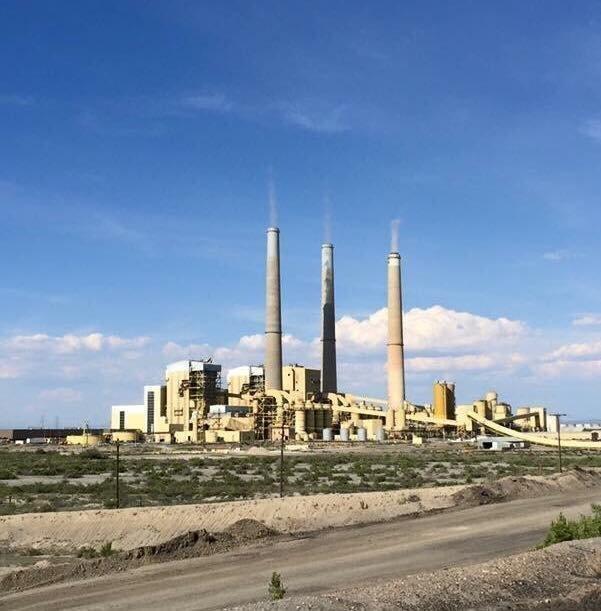The community gathered at the Hunter Power Plant on Wednesday afternoon for a presentation and tour in conjunction with the Emery County Business Chamber. Some of the main topics of discussion included the future of the Hunter and Huntington power plants as well as renewable energies.
Every two years, PacifiCorp files its Integrated Recourse Plan with the six utility commissions in the company’s service area. The 2023 plan focused on the company’s advancement on its path to net-zero emissions. Laren Huntsman, Hunter Power Plant Manager, spoke about the plan during Wednesday’s presentation.
This year’s plan called for a dramatic increase in the company’s current wind and solar resources. This includes an increase of 20,000 megawatts by 2032 as well as 7,400 megawatts of energy storage by 2029. Huntsman stated that a diverse portfolio is beneficial as one energy source could not meet the increasing demand of the Western United States. Diversity also ensures that if one source lacks, others can pick up the slack.
“It builds on PacifiCorp’s strong reliability by leveraging the abundant diversity of resources that are available across its vast multi-state transmission network, from the Rockies to the Pacific Coast,” PacifiCorp shared in a press release following the submission of the 2023 plan. “The plan continues investments in innovative emissions-free technologies, including advanced nuclear and non-emitting peaking resources that meet high-demand energy needs.”
While carbon capture utilization and storage has been an item of discussion, it was not selected in PacifiCorp’s current plan. Carbon capture is the process of gathering carbon dioxide before it enters the atmosphere, transporting it and storing it in a geological formation underground. Huntsman explained that the Hunter Plant has a geological dome below ground that could serve this purpose, but there is not currently a large-scale capture technology for a plant that size.
The plan also outlined the anticipated lifespan of the Hunter and Huntington power plants. Huntsman said Hunter unit one is projected to go offline in 2031, while Hunter units two and three, along with both units in Huntington, would shut down in 2032.
With the anticipated closures, PacifiCorp has been envisioning new resources, which includes investments in Utah and Wyoming. In 2023, the company’s Integrated Resource Plan included the advanced nuclear reactor project in Kemmerer, Wyoming, projected to go online in 2030. The plant in Wyoming would would use similar technology to the molten salt technology being researched at the San Rafael Energy Research Center.
This year’s plan selected two more advanced nuclear projects, proposed to be located in Utah near currently operating coal plants. The projects are being considered near the existing Hunter and Huntington plants. Huntsman explained that if the local sites are selected, new plants would be constructed as the current coal fired plants cannot be retrofitted to accommodate nuclear.
“The advanced nuclear resources that appear in the plan represent a promising future for our employees and communities in rural Utah and Wyoming,” said Rick Link, senior vice president of resource planning, procurement and optimization at PacifiCorp. “As we transition to a net-zero energy future, it is important to leverage the experience, skills and dedication of the communities that have supplied our energy needs for the past century.”
PacifiCorp’s 2023 Integrated Resource Plan calls for a system-wide 70% reduction of greenhouse gas emissions from 2005 levels by 2030, an 87% reduction by 2035 and a 100% reduction by 2050.


